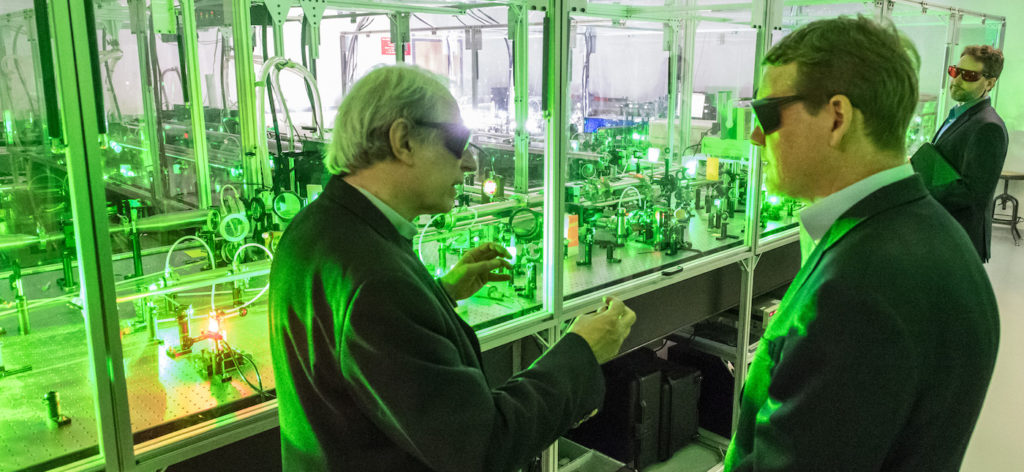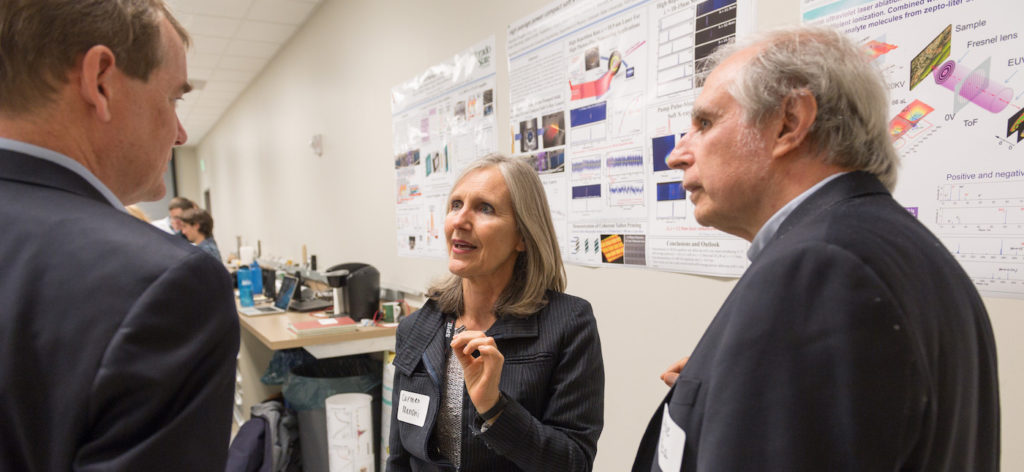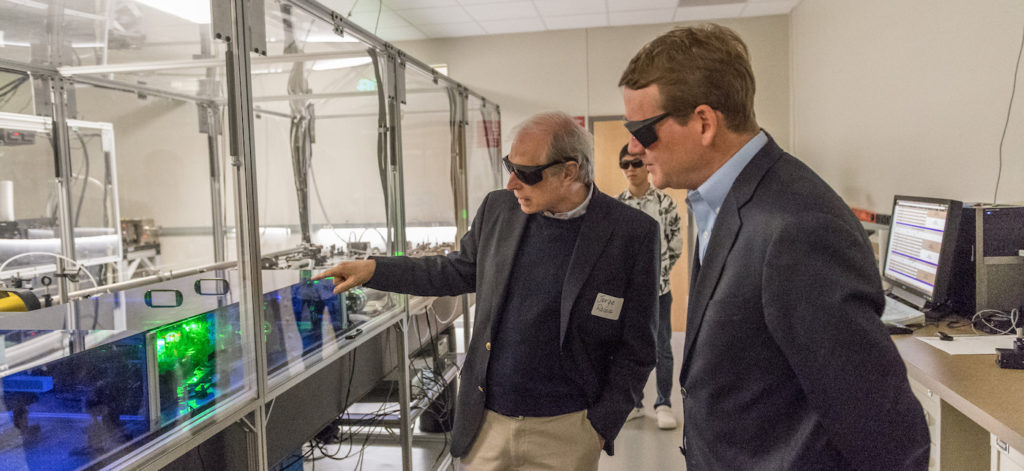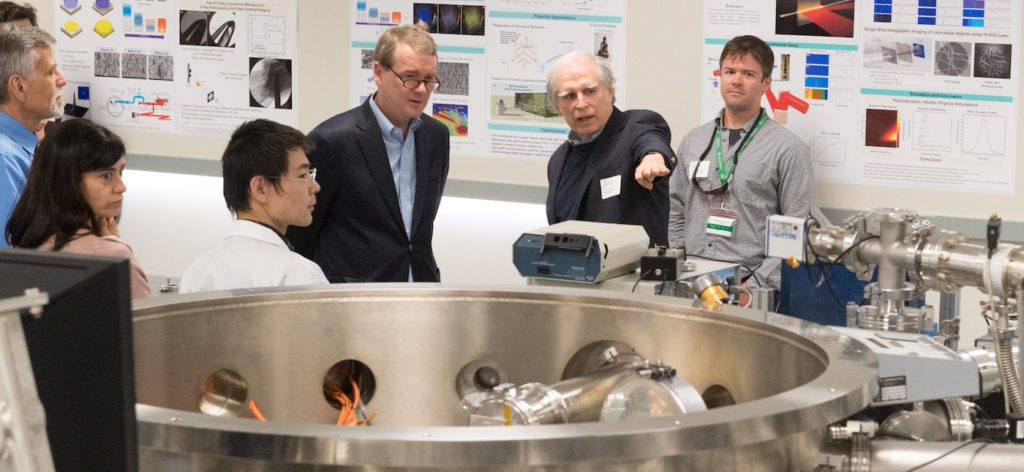On May 3, U.S. Sen. Michael Bennet visited Colorado State University’s Advanced Beam Laboratory, where researchers are producing micro-scale nuclear fusion with record efficiency for a compact laser.
Leading Bennet on the tour was University Distinguished Professor Jorge Rocca of the Departments of Electrical and Computer Engineering and Physics. Several of Rocca’s graduate students took turns explaining the experiments to the senator as the group examined two of the facility’s high-powered lasers.
One of Bennet’s aides said he had read about the lab’s most recent work in Newsweek, which reported on findings published in the journal Nature Communications. That paper’s first author, CSU grad student Alden Curtis, was among those accompanying Bennet on the tour.
“This is our tool, like a carpenter has a hammer,” Rocca said as he showed Bennet how the laser beam gets amplified as it passes through various crystals. “This is our hammer.”





In the study published this spring, the scientists and their collaborators describe how they used a compact but powerful laser to heat arrays of nanowires to create micro-scale nuclear fusion in the lab. Nuclear fusion, the process that powers our sun, happens when nuclear reactions between light elements produce heavier ones. The research team achieved record-setting efficiency for the generation of neutrons – chargeless sub-atomic particles resulting from the fusion process.
These types of laser-driven controlled fusion experiments are usually done with multi-hundred-million-dollar lasers housed in stadium-sized buildings. But Rocca’s team of students, research scientists and collaborators work with an ultra-fast, high-powered tabletop laser they built from scratch.
Rocca and his students told Bennet that there are many possible applications for this science, including creating high-resolution images taken with the equivalent of a camera exposure of one-trillionth of a second. Lasers can also be used to produce the light that will print the next generation of computer chips. He told Bennet that CSU’s lasers are used by graduate and undergraduate students for various experiments, as well as in summer research programs for high school teachers and students.